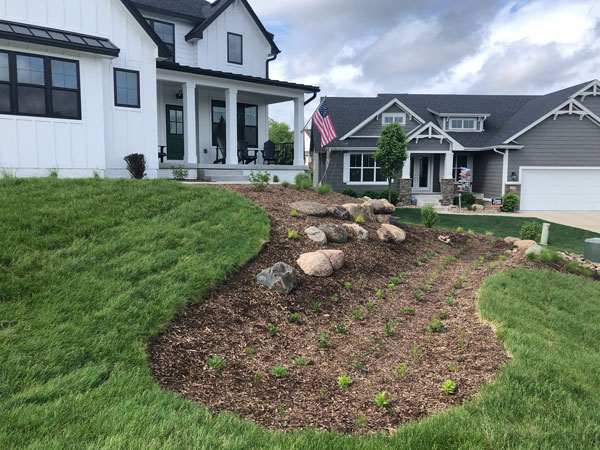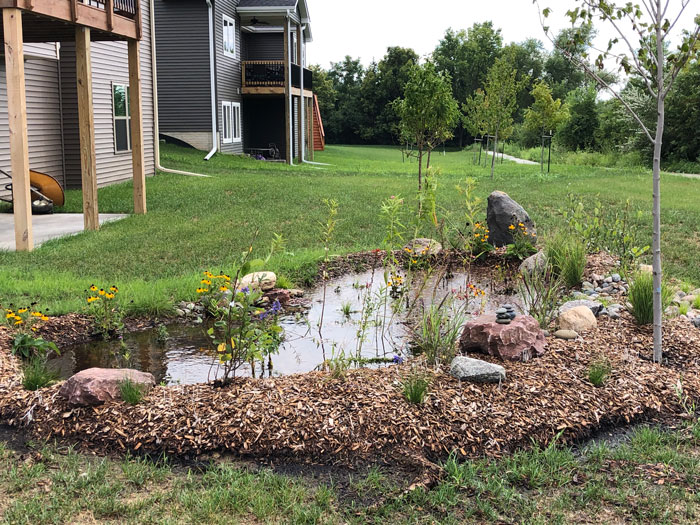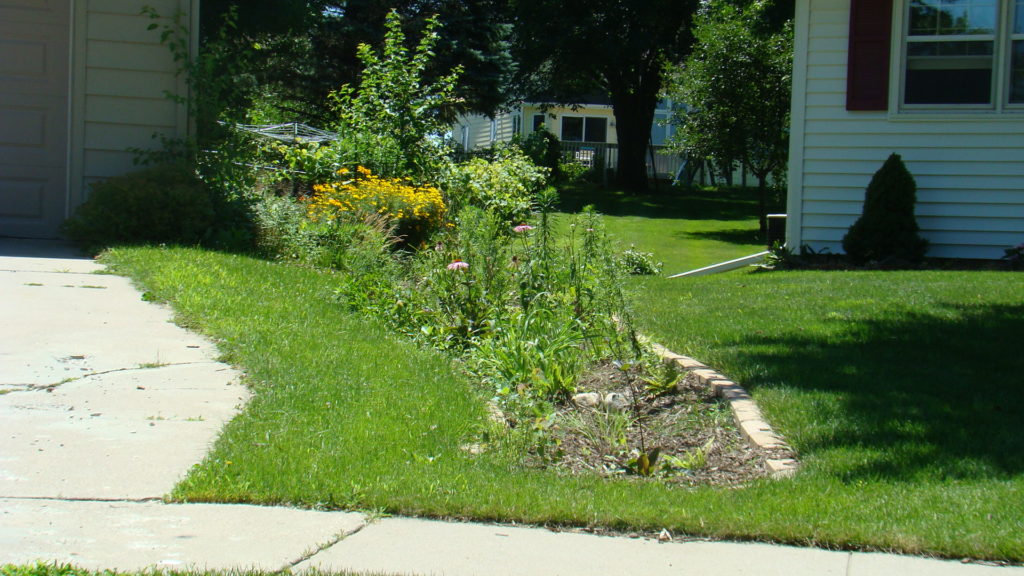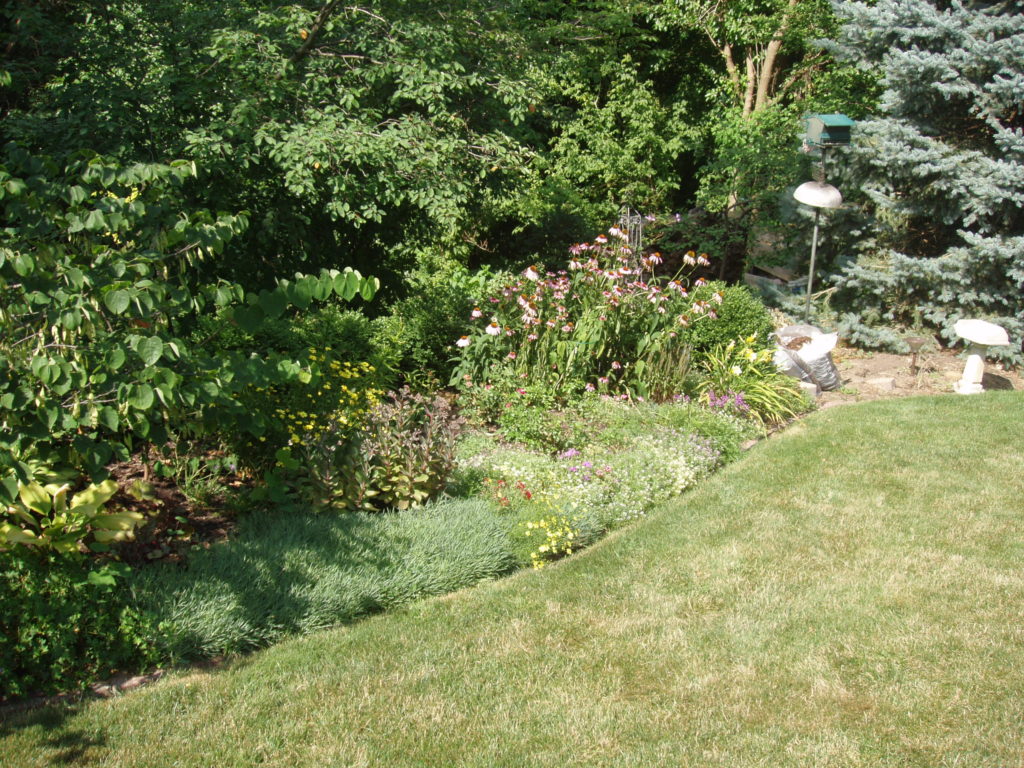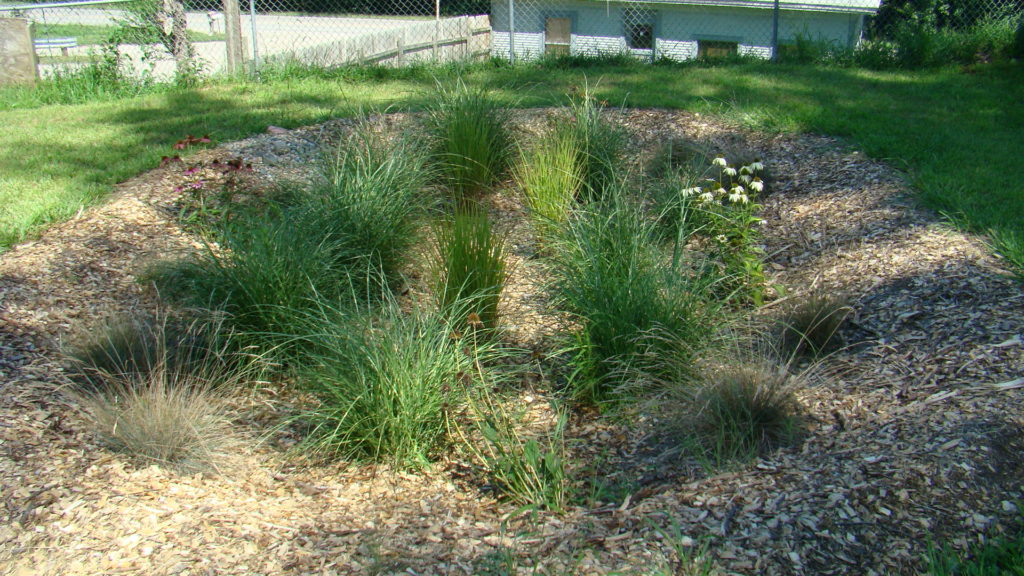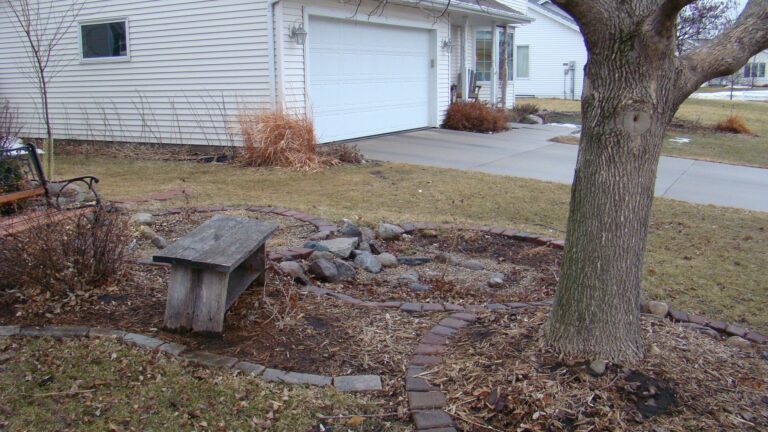A rain garden is a shallow, planted depression designed to capture and absorb rainwater that runs off from roofs, driveways, and yards. Instead of allowing this water to flow into storm drains and local waterways, rain gardens hold the water briefly, allowing it to slowly soak into the ground.
Think of a rain garden as a natural sponge for your landscape. During rainfall, water collects in the garden’s shallow bowl, then gradually filters down through layers of soil and plant roots. This process removes pollutants and reduces the volume of water entering our streams and lakes.
Why plant a rain garden?
Rain gardens offer multiple benefits:
- Manage stormwater naturally on your property
- Prevent flooding and erosion in your yard and community
- Filter out pollutants from runoff before they reach waterways
- Create habitat for butterflies, bees, and birds
- Add beauty to your landscape with colorful native plants
- Reduce maintenance compared to conventional landscaping
A typical residential rain garden can capture thousands of gallons of water annually that would otherwise contribute to localized flooding and water pollution.
Getting started
Rain gardens work in most yards and can be adapted to different soil types and conditions. The ideal location is at least 10 feet from your home’s foundation, where it can capture runoff from downspouts, driveways, or naturally sloping areas.
The Iowa Rain Garden Design & Installation Guide offers complete instructions for planning, designing, and installing your own rain garden. For assistance, contact your local Soil and Water Conservation District—many communities offer technical support or even cost-sharing programs to help homeowners install rain gardens.
By installing a rain garden, you’re not just enhancing your property—you’re taking a simple but significant step toward protecting Iowa’s water resources for generations to come.
Iowa Rain Garden Design & Installation Guide
The Iowa Rain Garden Design & Installation Guide provides everything you need to create effective, beautiful rain gardens. This comprehensive resource offers step-by-step instructions for both basic and enhanced designs, with guidance on location selection, sizing, and proper drainage. You’ll find plant selection recommendations, sample layouts, complete materials lists for DIY or contractor installation, and maintenance schedules to ensure long-term success. Developed collaboratively by ISWEP, the Iowa Department of Agriculture and Land Stewardship, the Iowa Department of Natural Resources, and Polk County Soil and Water Conservation District, this guide reflects the expertise of stormwater professionals, state officials, and design consultants.
Recommended paperwork for cost-share funding
We have compiled a convenient packet of paperwork that is typically submitted when applying for cost-share funding for basic and enhanced rain gardens in Iowa. All forms are fillable and can be saved digitally.

